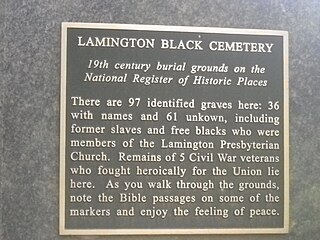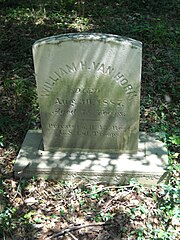
Bedminster is a township in Somerset County, in the U.S. state of New Jersey. As of the 2020 United States census, the township's population was 8,272, an increase of 107 (+1.3%) from the 2010 census count of 8,165, which in turn reflected a decline of 137 (−1.7%) from the 8,302 counted in the 2000 census. Located within the Raritan Valley region, Bedminster is part of the Somerset Hills of northern Somerset County, bordering both Hunterdon and Morris counties.

African Burial Ground National Monument is a monument at Duane Street and African Burial Ground Way in the Civic Center section of Lower Manhattan, New York City. Its main building is the Ted Weiss Federal Building at 290 Broadway. The site contains the remains of more than 419 Africans buried during the late 17th and 18th centuries in a portion of what was the largest colonial-era cemetery for people of African descent, some free, most enslaved. Historians estimate there may have been as many as 10,000–20,000 burials in what was called the Negroes Burial Ground in the 18th century. The five to six acre site's excavation and study was called "the most important historic urban archaeological project in the United States." The Burial Ground site is New York's earliest known African-American cemetery; studies show an estimated 15,000 African American people were buried here.

Chalmette National Cemetery is a United States National Cemetery located within Jean Lafitte National Historical Park and Preserve in Chalmette, Louisiana. The cemetery is a 17.5-acre (7.1 ha) graveyard adjacent to the site that was once the battleground of the Battle of New Orleans, which took place at the end of the War of 1812. Despite its proximity to the site of the Battle of New Orleans in the War of 1812, the majority of the interments are of soldiers who were casualties or veterans of the American Civil War, the Spanish-American War, World War I, World War II, the Korean War, or the Vietnam War. The cemetery was subsequently closed to new interments.

Lamington is an unincorporated community and census-designated place (CDP) located within Bedminster Township in Somerset County, in the U.S. state of New Jersey. It contains the Lamington Presbyterian Church Cemetery and the Lamington Black Cemetery.

The Minneapolis Pioneers and Soldiers Memorial Cemetery is the oldest extant cemetery in Minneapolis, Minnesota, United States. It was established in 1858 as a privately owned burial ground known as Minneapolis Cemetery or Layman's Cemetery. By 1919 it was full, with more than 27,000 bodies, and was closed by the city government. Only a handful of burials have taken place there since.
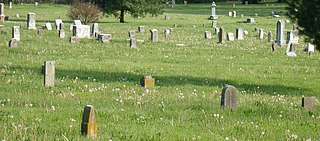
African Cemetery No. 2, also known as The Cemetery of the Union Benevolent Society No. 2, is a historic burial site located in Lexington, Kentucky, United States.

The Colored Soldiers Monument in Frankfort, Kentucky's Green Hill Cemetery, at the junction of US 60 and US 421, is the only Kentucky monument honoring black soldiers that participated in the American Civil War, and one of only four in the entire United States. Erected by the Woman's Relief Corps No. 8, an auxiliary of the Grand Army of the Republic, it was unveiled on July 4, 1924. The only other monument built by GAR in Kentucky is the GAR Monument in Covington.
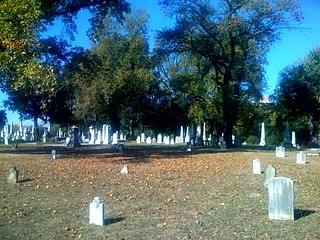
The Shockoe Hill Cemetery is a historic cemetery located on Shockoe Hill in Richmond, Virginia.

Eden Cemetery is a historic African-American cemetery located in Collingdale, Pennsylvania. It was established June 20, 1902, and is the oldest existing black owned cemetery in the United States. The cemetery covers about 53 acres and contains approximately 93,000 burials.

The Rye African-American Cemetery, also known as the African Cemetery in Rye, is a historic 1.4 acre cemetery on North Street in Rye, New York. It was established as a burying ground for local African-Americans in 1860 through a donation of land by the Underhill family with the intent that it “shall forever hereafter kept, held and used for the purpose of a cemetery or burial place for the colored inhabitants of the said Town of Rye, and its vicinity free and clear of any charge". At least 35 of the individuals buried there are American veterans including men who served with the 20th United States Colored Infantry Regiment. The last documented burial in the cemetery was in 1964.

Mount Moor African-American Cemetery, also known as Mount Moor Cemetery, is a historic African American cemetery located at Palisades Center, West Nyack in Rockland County, New York. It was established in 1849 and contains approximately 90 known graves including veterans of the Civil War, Spanish-American War and World War I. Among the notable burials are Lafayette Logan, a Buffalo Soldier who fought with the 54th Massachusetts Infantry Regiment and several members of the 26th United States Colored Infantry Regiment.
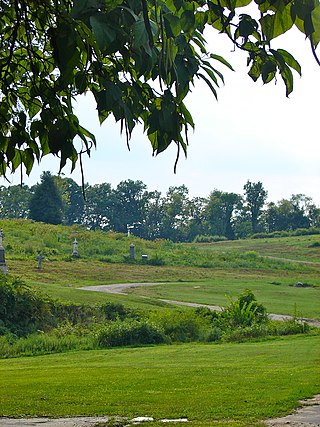
Woodlawn Cemetery is a historic cemetery in the Benning Ridge neighborhood of Washington, D.C., in the United States. The 22.5-acre (91,000 m2) cemetery contains approximately 36,000 burials, nearly all of them African Americans. The cemetery was added to the National Register of Historic Places on December 20, 1996.

The Contrabands and Freedmen Cemetery at 1001 S. Washington St. in Alexandria, Virginia was listed on the National Register of Historic Places on August 15, 2012. It was established in February 1864 by the Union military commander of the Alexandria District for use as a cemetery for the burial of African Americans who had escaped slavery, known as contrabands and freedmen. During early Reconstruction, it was operated by the Freedmen's Bureau. It was closed in late 1868, after Congress ended most operations of the Bureau. The last recorded burial was made in January 1869.
Columbian Harmony Cemetery was an African-American cemetery that formerly existed at 9th Street NE and Rhode Island Avenue NE in Washington, D.C., in the United States. Constructed in 1859, it was the successor to the smaller Harmoneon Cemetery in downtown Washington. All graves in the cemetery were moved to National Harmony Memorial Park in Landover, Maryland, in 1959. The cemetery site was sold to developers, and a portion used for the Rhode Island Avenue – Brentwood Washington Metro station.

West Point Cemetery, also known as Potter's Field and Calvary Cemetery, is a historic cemetery and national historic district located at Norfolk, Virginia. It encompasses three contributing sites, one contributing structure, and one contributing object in an African American graveyard in downtown Norfolk. The cemetery was established in 1873, and includes a grouping of headstones marking the remains of 58 black soldiers and sailors who served in the American Civil War, and a monument honoring these veterans stands over their graves. Other notable elements include the Potter's Field, O’Rourke Mausoleum, and the West Point Cemetery entry sign.

The Lamington Historic District is a historic district located in Lamington, an unincorporated community in Bedminster Township, Somerset County, New Jersey. The district was added to the National Register of Historic Places on June 21, 1984.

The Maplewood Cemetery, formerly known as the New Pulaski Cemetery, is a historic cemetery in Pulaski, Tennessee, U.S..
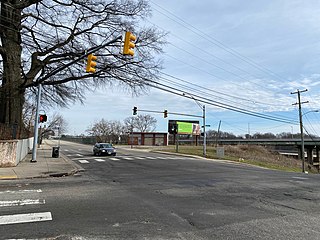
The Shockoe Hill African Burying Ground was established by the city of Richmond, Virginia, for the interment of free people of color, and the enslaved. The heart of this now invisible burying ground is located at 1305 N 5th St.
Frederick Douglass Memorial Park is a historic cemetery for African Americans in the Oakwood neighborhood of Staten Island, New York. It is named for abolitionist, orator, statesman, and author Frederick Douglass (1818–1895), although he is not buried there. It has burial sites for numerous prominent African Americans, including a pioneering journalist, athletes, musicians, performers, political leaders, and business people.





